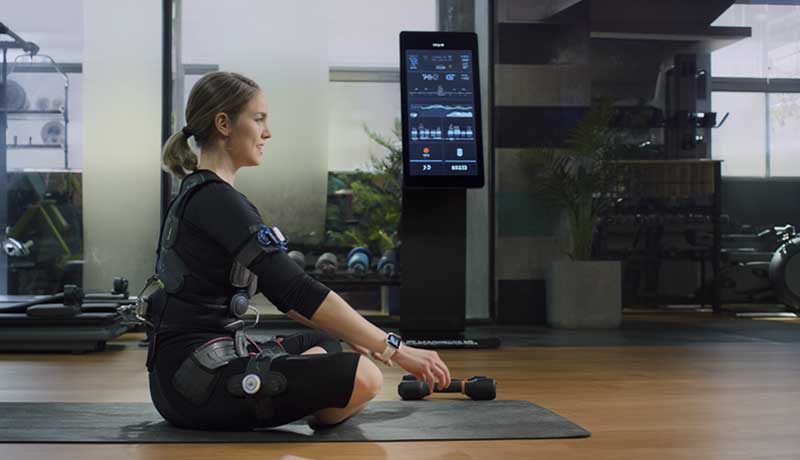Wellness ➢ Recovery Guide
The Complete Guide to Active Recovery and Wellness Tech

Recovery isn't just about rest—it's an active process that can be optimized through strategic techniques, proper timing, and innovative wellness technology. Whether you're an athlete pushing performance boundaries or someone dealing with daily stress and fatigue, understanding and implementing effective recovery strategies can dramatically improve your health, performance, and quality of life.
The science of recovery has evolved significantly in recent years, revealing that passive rest alone isn't enough for optimal healing and regeneration. Active recovery combines targeted movement, therapeutic techniques, and advanced technology to accelerate the body's natural healing processes while preventing injury and improving long-term resilience.
Understanding the Recovery Process
Recovery occurs at multiple levels—muscular, nervous system, cardiovascular, and cellular. During intense activity or stress, your body accumulates metabolic waste, depletes energy stores, and creates micro-damage that triggers adaptation. Effective recovery strategies address each of these systems systematically.
The key is balancing active intervention with adequate rest. Active recovery techniques promote blood flow, reduce inflammation, and maintain mobility without adding additional stress to recovering tissues. This approach accelerates healing while maintaining fitness and preventing the stiffness that often accompanies complete rest.
Technology-Enhanced Recovery Methods
Compression Therapy: Advanced compression devices use pneumatic pressure to improve circulation and reduce swelling. Modern systems can be programmed with specific pressure patterns and timing to optimize lymphatic drainage and enhance nutrient delivery to recovering tissues.
Heat and Cold Therapy: Contrast therapy alternating between heat and cold has proven highly effective for recovery. Smart recovery devices now allow precise temperature control and timing, maximizing the benefits of vasodilation and vasoconstriction cycles.
Vibration and Percussion Therapy: Targeted vibration therapy helps reduce muscle tension, improve flexibility, and accelerate recovery. Modern devices offer variable frequencies and intensities that can be customized based on specific needs and recovery goals.
Optimizing Recovery Timing
The timing of recovery interventions is crucial for maximizing effectiveness. Immediate post-exercise recovery (0-2 hours) should focus on reducing inflammation and beginning the repair process. This is the optimal window for compression therapy, cold therapy, and gentle movement.
Delayed recovery (2-24 hours) shifts focus to promoting healing and maintaining mobility. Heat therapy, massage, and active movement become more beneficial during this phase. Sleep optimization is critical during this period, as most cellular repair occurs during deep sleep stages.
Long-term recovery (24+ hours) emphasizes restoration and preparation for future activity. This phase benefits from progressive loading, mobility work, and stress management techniques that support ongoing adaptation and resilience building.
Nutrition and Hydration for Recovery
Recovery nutrition goes beyond simple protein intake. The timing and composition of post-exercise nutrition significantly impact recovery speed and quality. Consuming protein and carbohydrates within 30-60 minutes after intense activity maximizes muscle protein synthesis and glycogen replenishment.
Hydration strategies should account for electrolyte replacement, not just fluid volume. Advanced hydration monitoring technology can track fluid balance and electrolyte status, ensuring optimal cellular function during recovery periods.
Sleep as the Ultimate Recovery Tool
Quality sleep remains the most powerful recovery intervention available. During deep sleep stages, your body releases growth hormone, consolidates memories, and performs critical cellular repair processes. Recovery-focused sleep technology can optimize sleep environment and timing to maximize these benefits.
Sleep tracking devices now monitor recovery metrics like heart rate variability and body temperature to assess recovery status and adjust sleep recommendations accordingly. This data-driven approach ensures that sleep truly serves its restorative function.
Creating Your Personal Recovery Protocol
Effective recovery protocols must be individualized based on your specific needs, goals, and constraints. Start by identifying your primary recovery challenges—whether that's muscle soreness, mental fatigue, or slow healing from injuries.
Gradually implement recovery techniques, monitoring their effectiveness through subjective measures (how you feel) and objective metrics (sleep quality, heart rate variability, performance indicators). The goal is creating a sustainable system that enhances your body's natural recovery processes without becoming overly complicated or time-consuming.
Remember that consistency trumps perfection in recovery protocols. Simple techniques performed regularly are far more effective than complex interventions used sporadically. Focus on building habits that support long-term health and resilience rather than quick fixes for immediate problems.
Share this article:
React to this article: